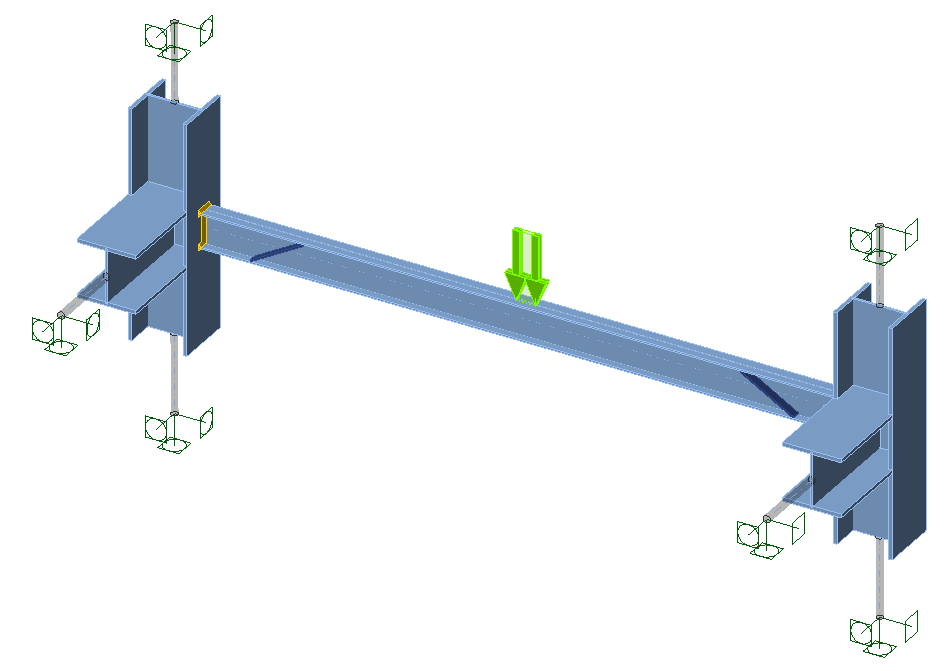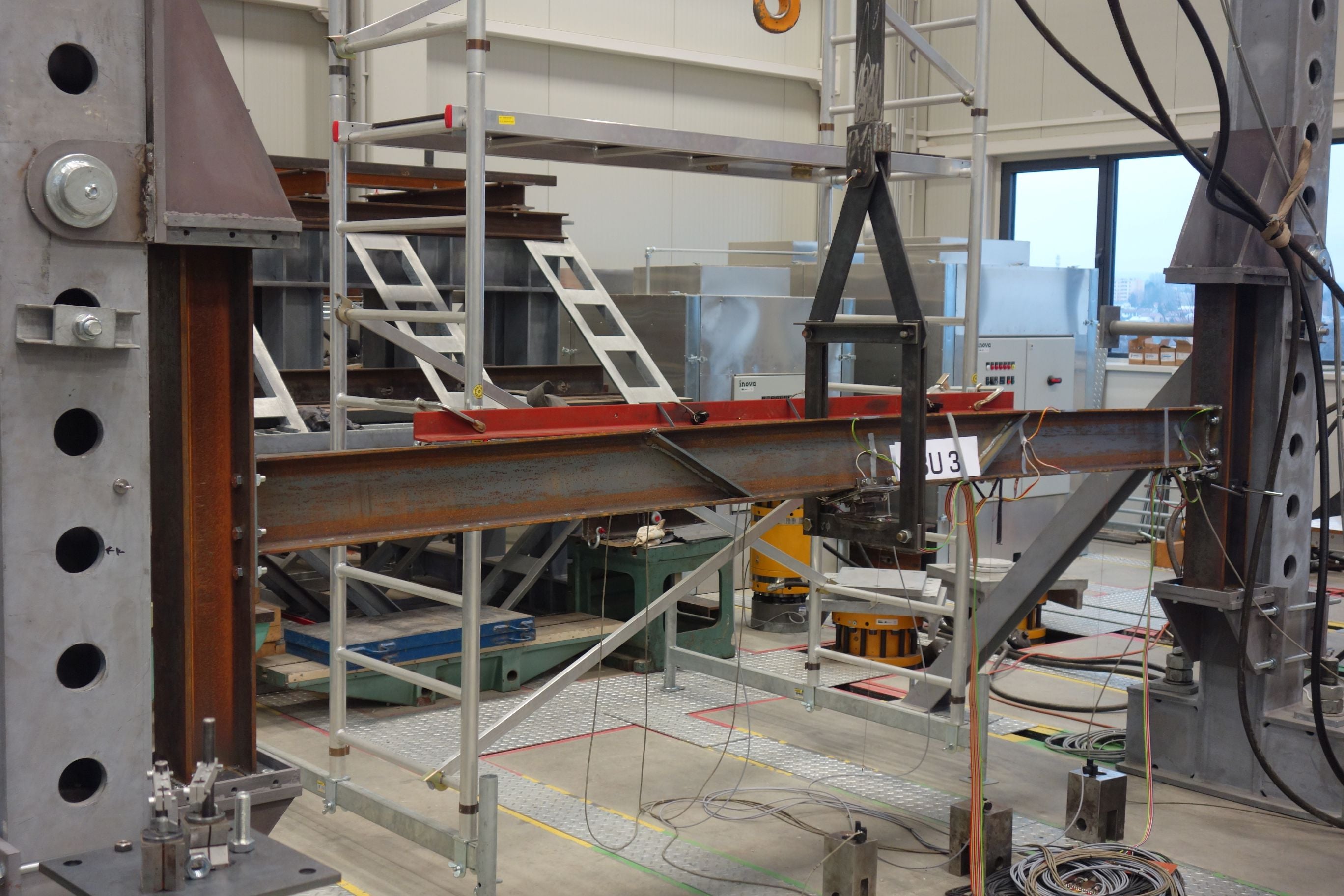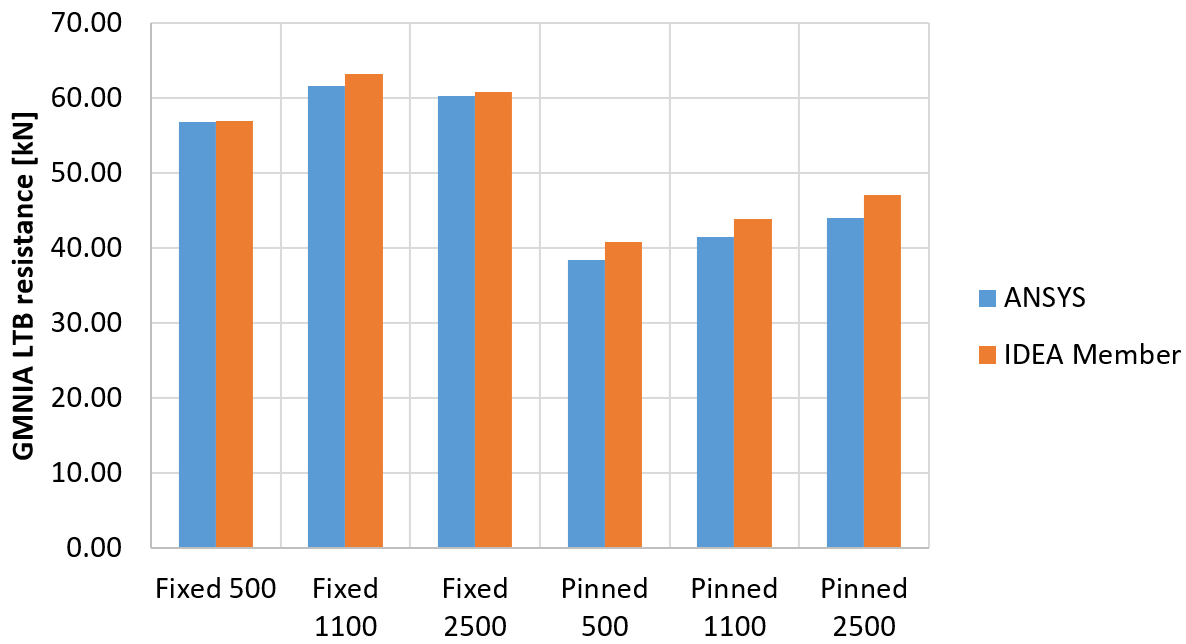Lateral-torsional buckling of a beam with transverse stiffeners
This verification study was performed for the IDEA StatiCa Member application. The goal was to ensure the results of LBA and GMNIA are correct and all the shell elements and finite elements of components are working properly. The geometry of the models was based on experiments performed at the AdMaS Center at the Brno University of Technology.
Numerical models were created in ANSYS, commercial, all-purpose software for finite element analysis. Beam IPE 180 was used with a length of 3.3 m from steel grade S235. Two boundary conditions were investigated:
- Fixed – all nodes at one end are fixed (all degrees of freedom are restrained), the other end is the same except for movement in the longitudinal direction of the beam is allowed
- Pinned – only the nodes of beam web are restrained (lateral rotation is allowed; at one end, all displacements are fixed, and on the other end, movement in the longitudinal direction of the beam is allowed)
The stiffeners were inclined 60 degrees from the vertical axis. The two stiffeners were placed symmetrically with varying mutual distance. No welds were modeled, the nodes of neighboring meshes were directly merged.
In ANSYS, linear static analysis, linear buckling analysis, and geometrically and materially nonlinear analysis with imperfections were performed. The imperfections were equal to L/300, where L is the member length (3.3 m).
The plastic strain can be seen in the following picture:
The corresponding models were created in IDEA StatiCa Member. The cross-section of related members was chosen as very large and short compared to the analyzed beam so that they do not influence the results.
The comparison of results is in the table below. FRd is the lateral-torsional buckling resistance determined by GMNIA, wy is the lateral deflection at beam mid-span at the maximum attained load, and Fcr is the critical buckling load determined by LBA. Stiffener positions indicate the stiffener X-position from the left node in IDEA StatiCa Member.
| GMNIA | LBA | ||||||
| FRd [kN] | FRd [kN] | wy [mm] | wy [mm] | Fcr [kN] | Fcr [kN] | ||
| Boundary conditions | Stiffener positions | ANSYS | MEMBER | ANSYS | MEMBER | ANSYS | MEMBER |
| Fixed | 1550,2050 | 56.79 | 56.97 | 22.07 | 23.30 | 104.4 | |
| 1250,2350 | 61.56 | 63.27 | 21.36 | 21.40 | 121.5 | ||
| 550,3050 | 60.21 | 60.84 | 18.46 | 19.70 | 122.4 | ||
| Pinned | 1550,2050 | 38.39 | 40.77 | 33.69 | 36.10 | 57.0 | 55.8 |
| 1250,2350 | 41.52 | 43.92 | 32.60 | 30.40 | 64.8 | 63.9 | |
| 550,3050 | 44.01 | 47.07 | 22.40 | 23.60 | 82.6 | 81 |
The results of both software packages are corresponding closely. IDEA Member provides slightly lower critical buckling load and slightly higher lateral-torsional buckling strength.
The difference is caused mainly by the modeling of stiffeners. In Ansys, the nodes are merged at the centerlines of plates, but in Member, the stiffener is shorter. It ends at the plate surface and the gap is filled by welds. The result is that the shorter plate in IDEA Member is slightly stiffer than the longer one in Ansys.






